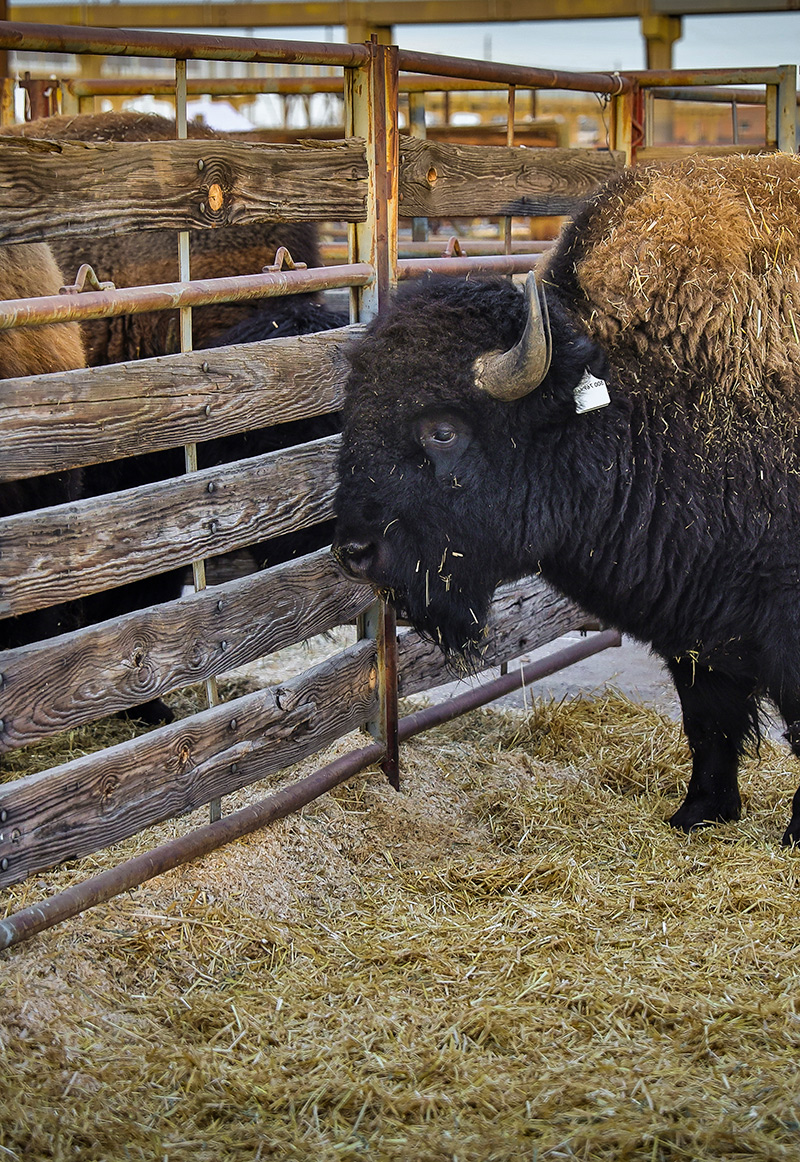Historic Buildings
Landmarks on the site date to as early as 1898. Integral to the campus experience, they help tell the story of the land — and of the West itself.
The Exchange Building
Former Denver Union Stock Yards headquarters
The Livestock Exchange Building at 4701 Marion St. stands in what was the epicenter of the region’s livestock industry for most of the 20th century. Purpose-built beside the railroad, stockyards and nearby meatpacking plants in three phases (1898, 1916, 1919), it represented the administrative, financial, regulatory and social hub of the livestock trade. Today it is privately owned, and in use as an office and retail building with an agriculturally-focused set of tenants.

Armour Building
Administrative offices for a regional meatpacker
The former Armour & Company Administration Building, built in 1917, is the only remaining building from the Armour & Company meatpacking plant property. Armour was one of five major U.S. meatpacking companies and played a major role in promoting and developing the livestock industry here at the National Western Center site – the former site of the Denver Union Stock Yards. Armour created the nation’s largest sheep market and the primary hog processing and distribution facility west of the Mississippi, and with other meatpackers put Denver on par with Omaha, Kansas City, St. Joseph and Sioux City. In 2019, Denver City Council designated the building a local landmark based on its unique history, structure and geography — ensuring it will be preserved for future generations. It is not yet in use.
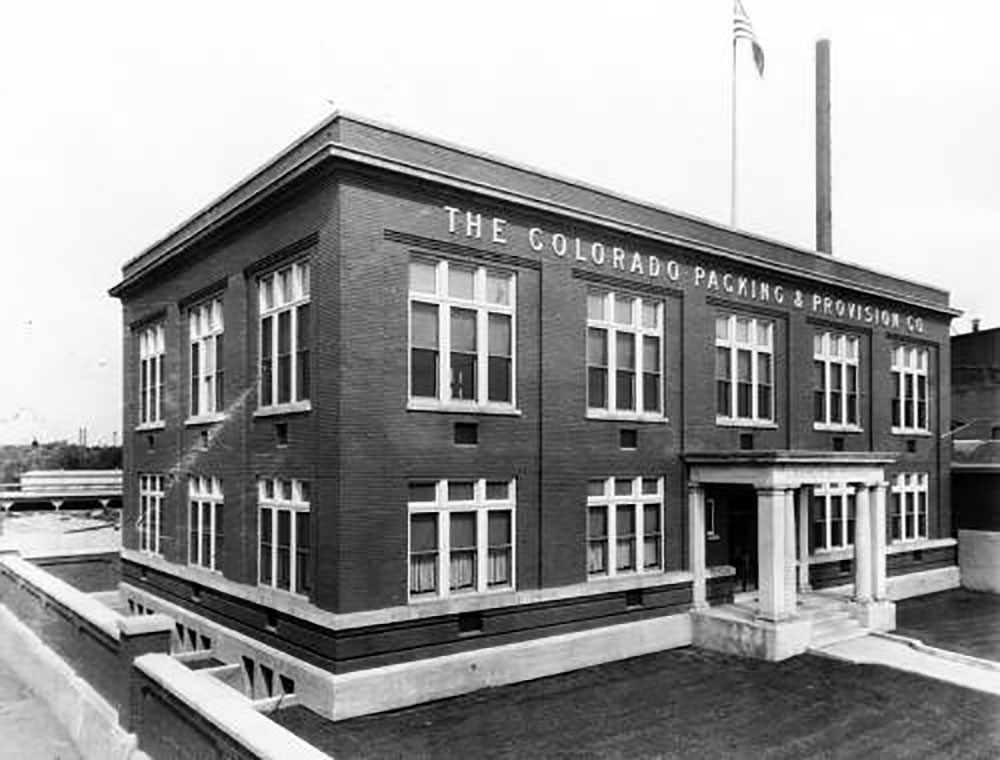
Armour Water Tower
Provided water to the Armour meatpacking plant
Armour built a water tower around 1920 beside its massive packing plant. One hundred years later, in 2020, construction crews relocated it to its new home at the heart of the campus. They cleaned and rehabilitated the 150-foot tower and gave it a protective coat of paint; they also removed graffiti and re-painted an Armour logo on the tank, honoring its origins. Now just a few hundred yards away from its original location, the water tower will serve as a beacon for visitors at the intersection of the stockyards and Stockyards Event Center.
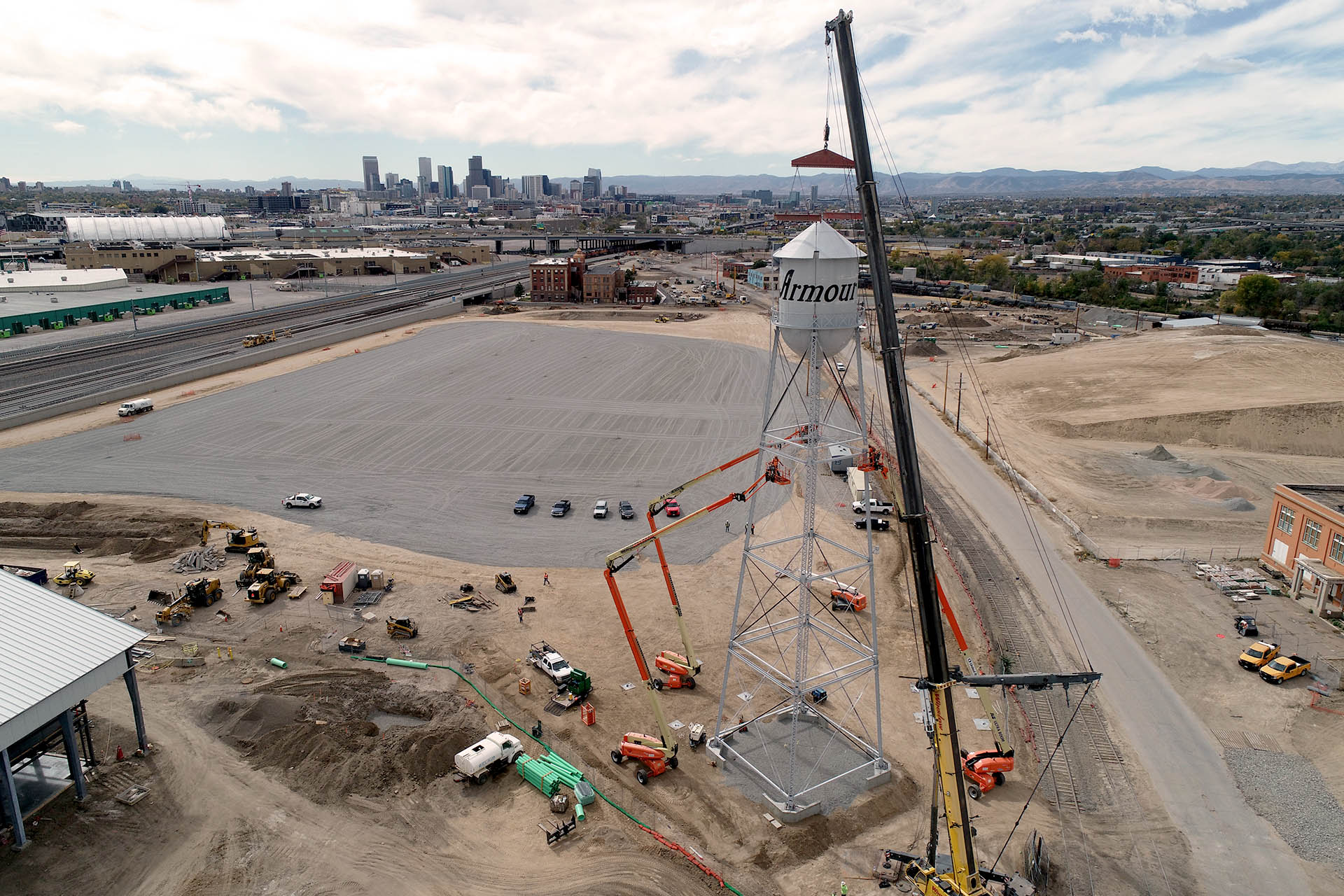
Stadium Arena
A Stock Show event venue for more than a century
The 83,000-square-foot Stadium Arena at 4655 Humboldt St. — once known as the National Amphitheater — is an enclosed 360-degree oval amphitheater built in 1908-1909 by the Western Stock Show Association and Denver Union Stock Yards. The Neoclassical steel-and-brick building was the primary venue for the National Western Stock Show from 1908 to 1951, and remains in use today. Its colorful flags are visible from I-70. In April 2016 Denver City Council designated the building a local historic landmark, ensuring it will be preserved for future generations. (Top banner image is Stadium Arena interior.)
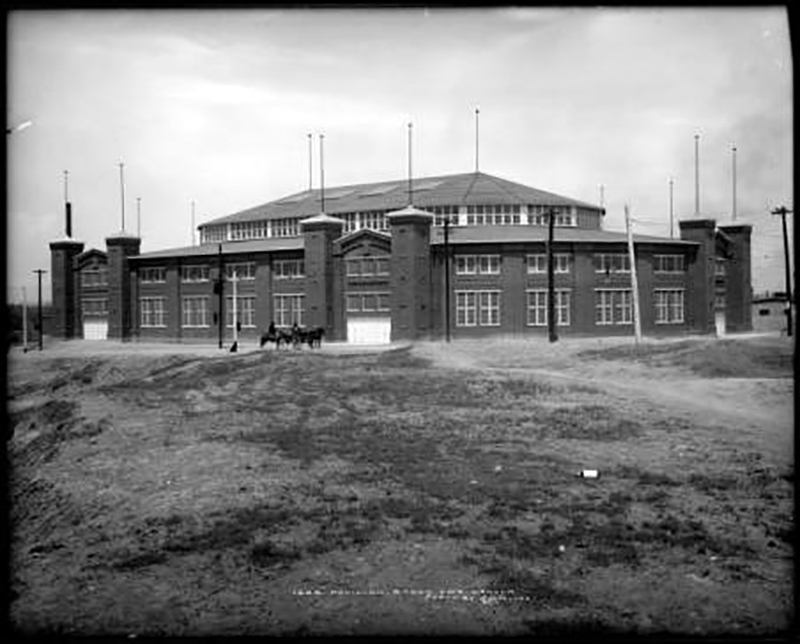
McConnell Building
Auto garage to meat packing plant
The McConnell Building is a two-story warehouse built around 1930. The building’s brick masonry walls and barrel-shaped roof are representative of the late 19th and early 20th century American Movements in architecture. The building was an auto garage until 1951. That year, the Swift meat packing plant began operating within the building, and did so until the 1960s. Owner Patrick McConnell transferred the building to McConnell Denver Properties in 2000; the City and County of Denver owned it from 2017 until 2020 when the CSU System became the property owner. The building is being restored and will be connected to the Hydro Building on the CSU Spur campus, which will open to the public in 2022.
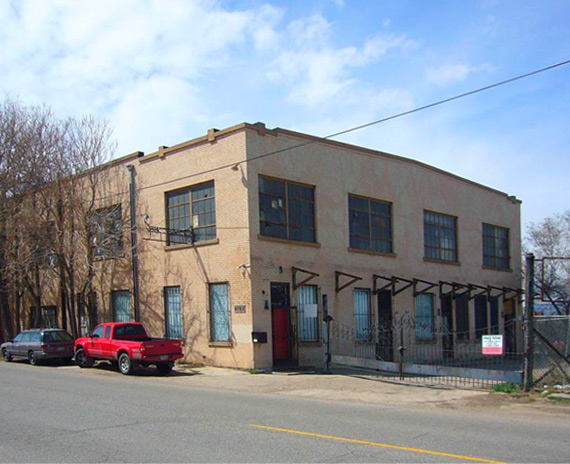
Sheep bridge
Shepherded millions of sheep to their final destination
A remnant bridge section over the South Platte River, known as the “sheep bridge,” was constructed sometime between 1933 and 1936 to connect the Denver Union Stock Yards and its markets on the east side of the river with meatpacking facilities on both sides of the river. The bridge was used primarily for moving sheep and other livestock and connected directly to the largest sheep barn in the world (since closed and demolished). A similar animal transport bridge had been in this location since the earliest days of the Denver Union Stock Yards, in the 1880s. The sheep bridge, which no longer reaches the west bank, will be preserved as an interpretive artifact. It is not accessible for pedestrian use.
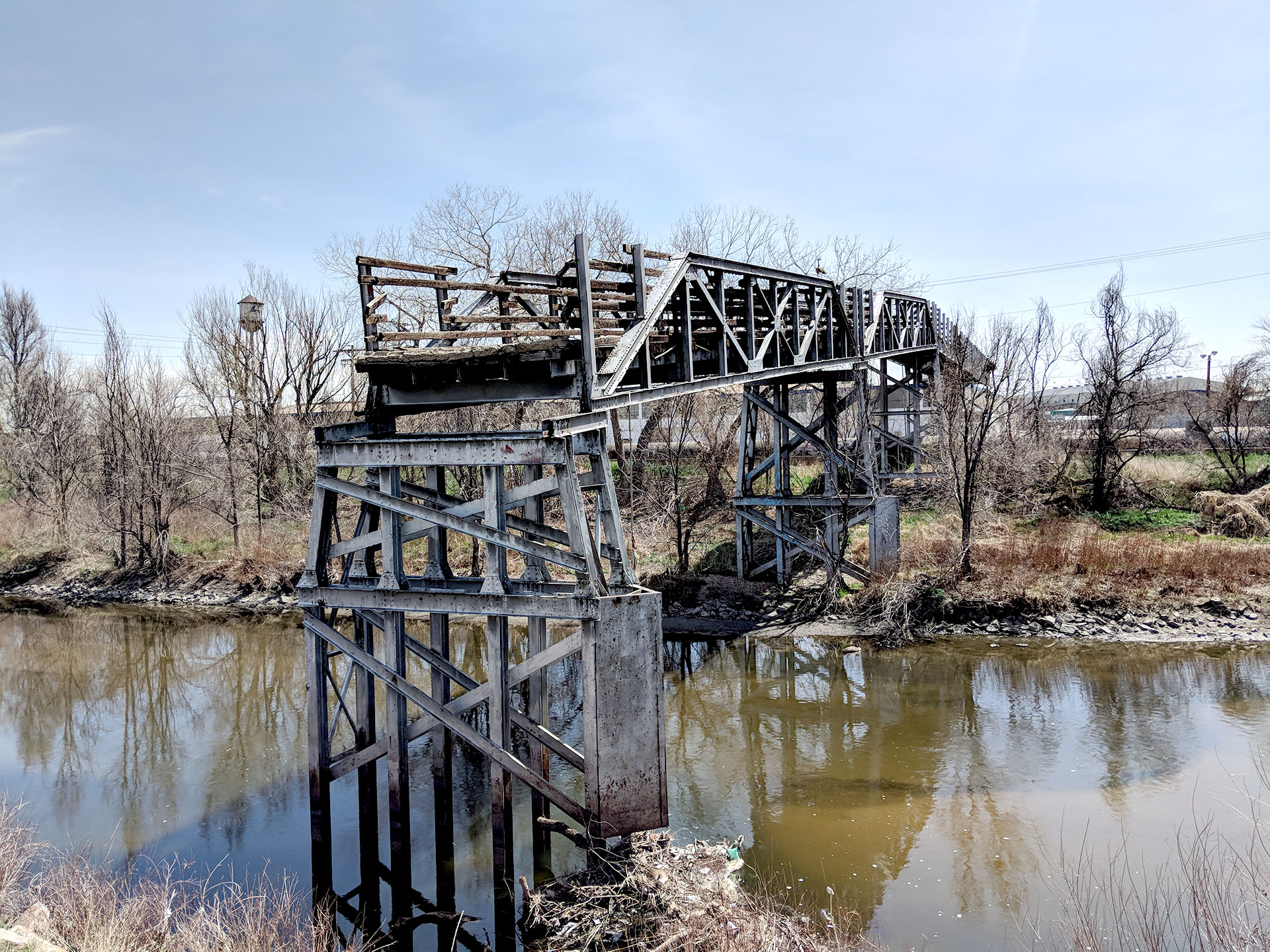
Preserving our Western Heritage
In embarking on the National Western Center redevelopment project, the City and County of Denver and its partners understood the value of preserving and interpreting key historic buildings and many of the artifacts on the site. Experts at History Colorado have advised on archaeological investigation and historic preservation.
While the buildings above are — or will be — activated year-round, smaller pieces of history have been cataloged and safely stored to be displayed or incorporated into the campus design. They include:
- Bricks, pens, gates, hardware and troughs from the stockyards
- Livestock scale and platform from the stockyards
- Building artifacts and signs, including the 1929 cornerstone from the sheep barn
- Brick cradles from the original (1930s) Delgany Interceptor wastewater pipeline
- The “In the Yards” sign from the entrance to the old stockyards
- The National Western Stock Show’s new Legacy Building will have a heritage center showcasing Stock Show history and archives.
